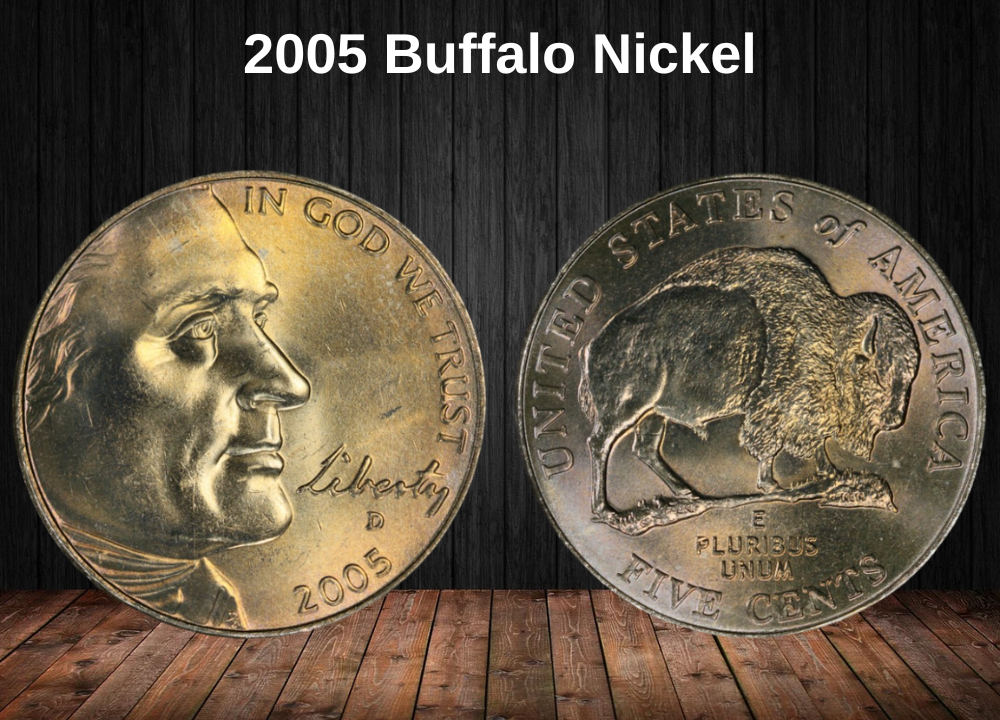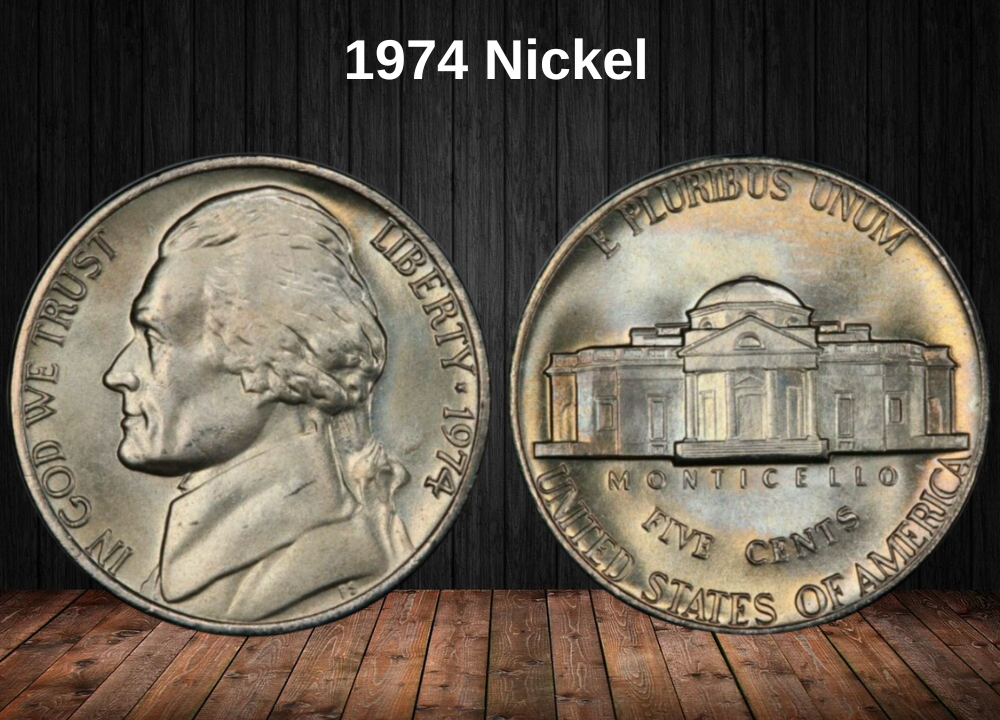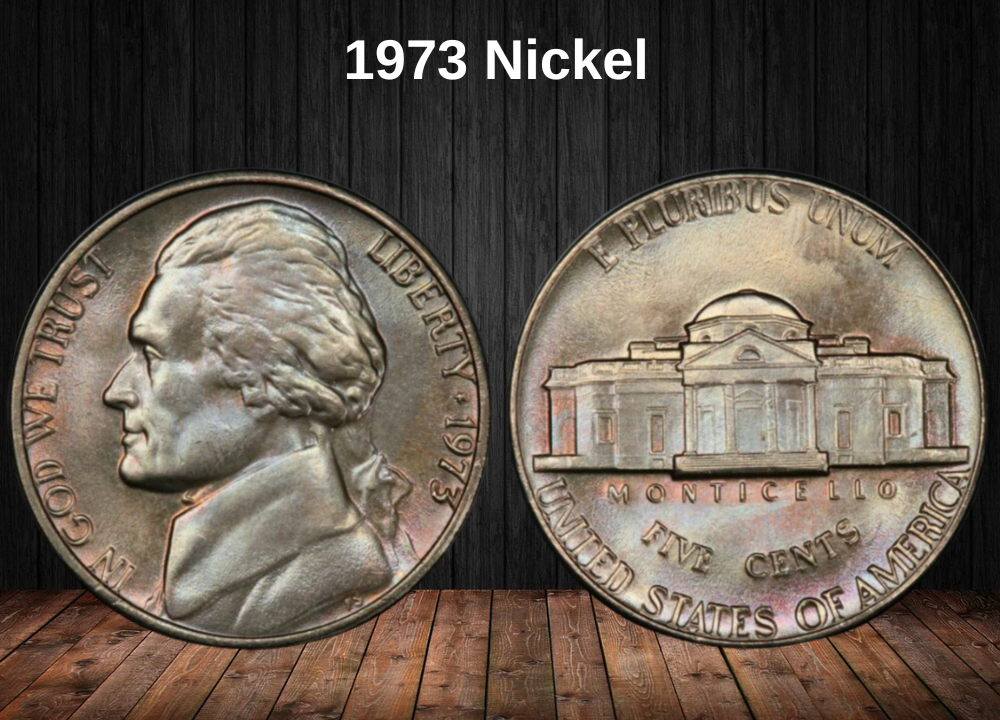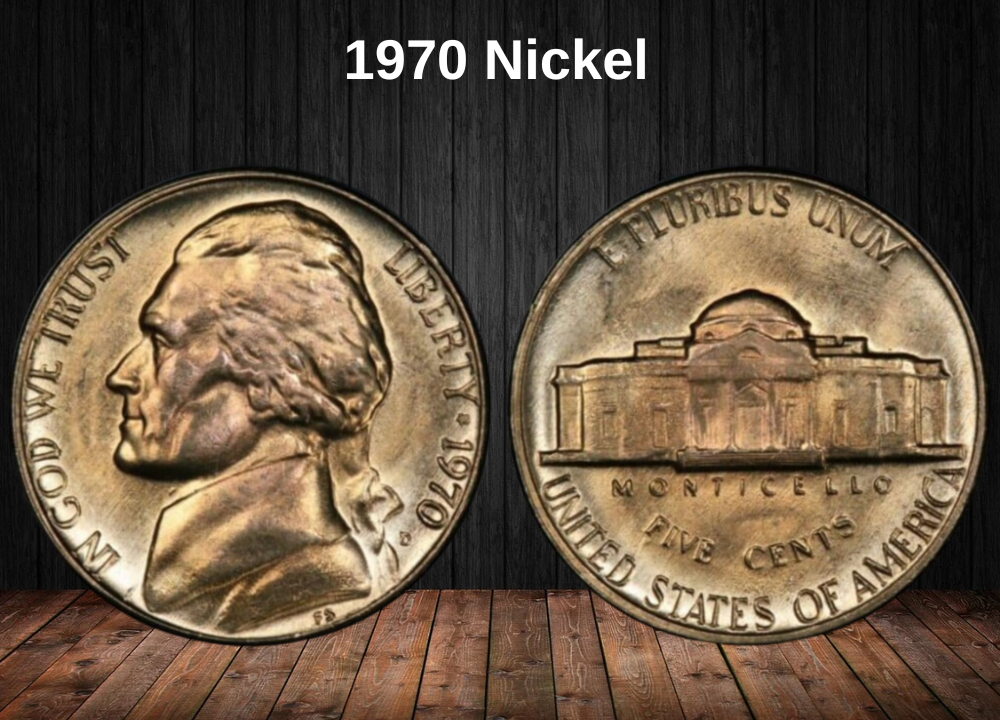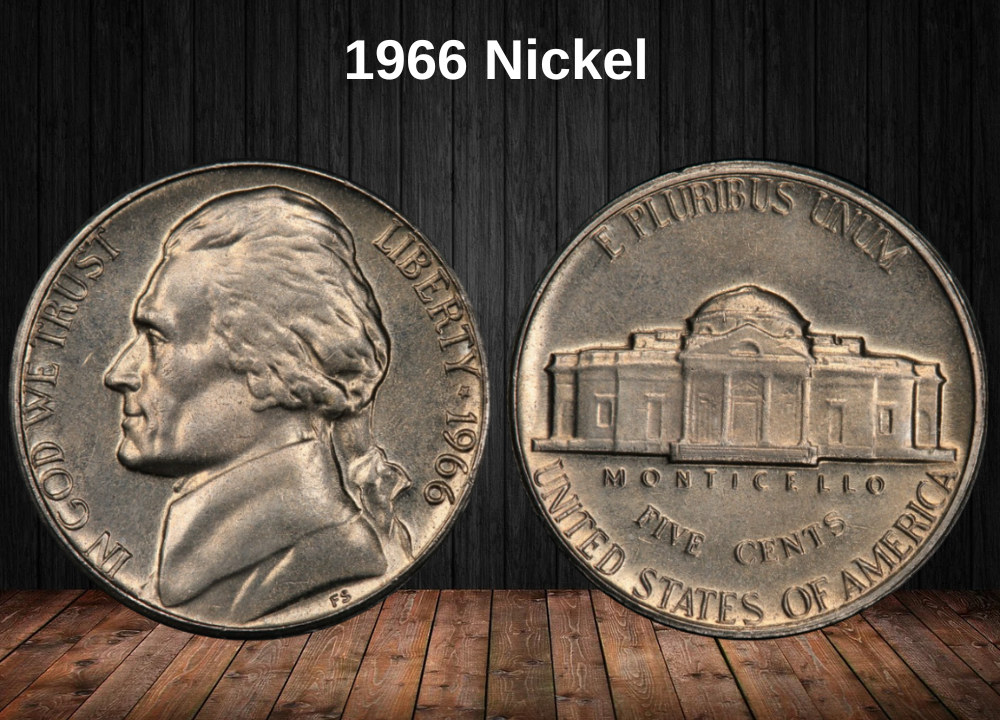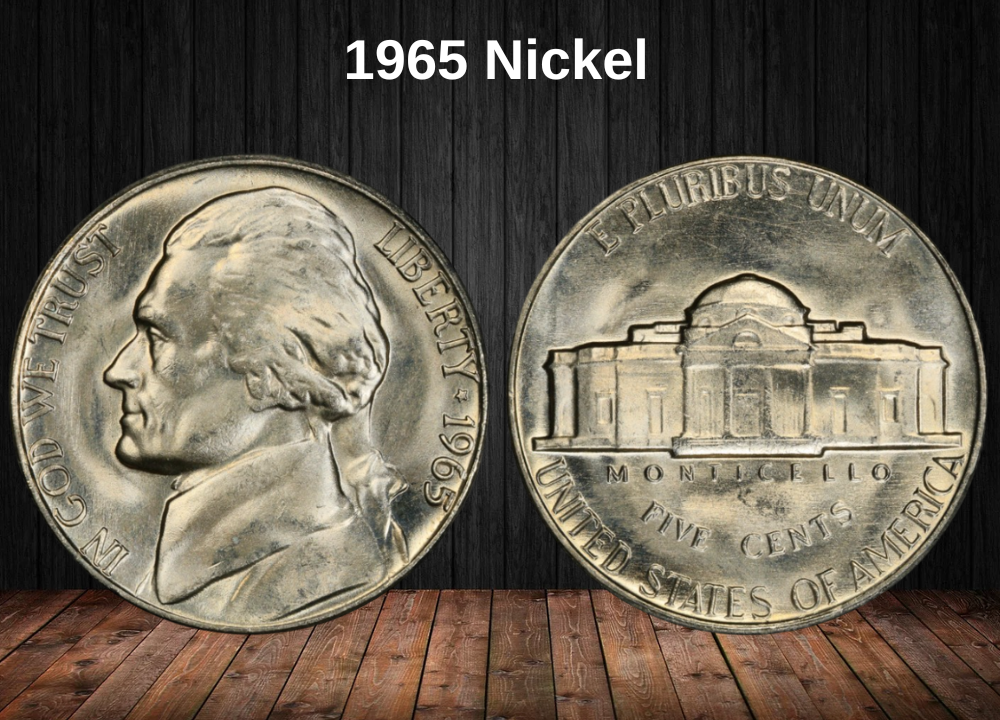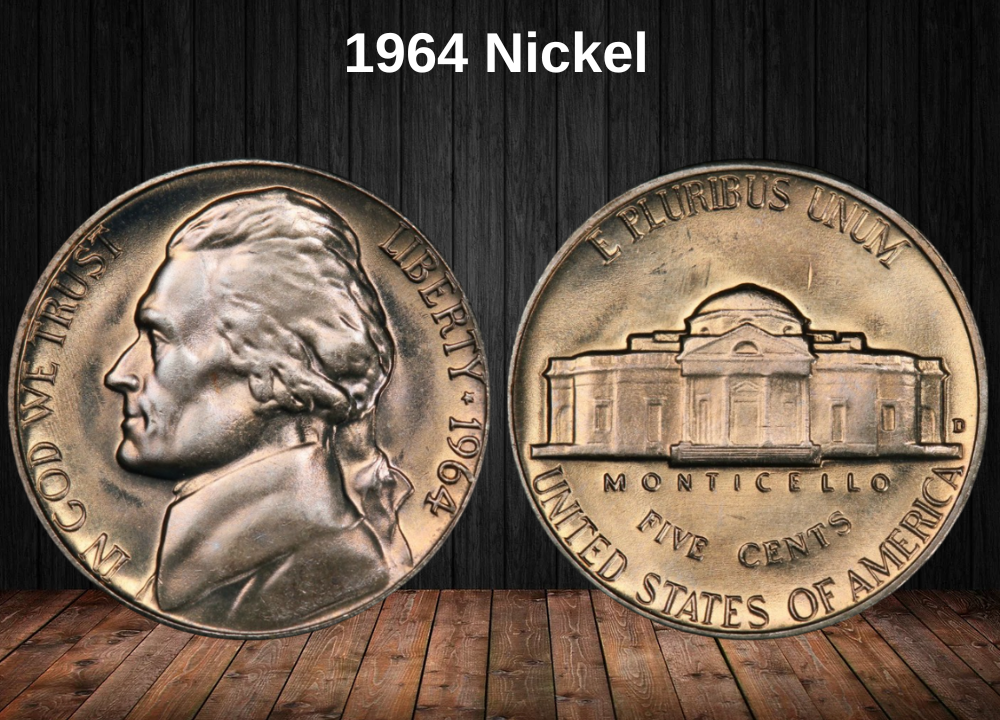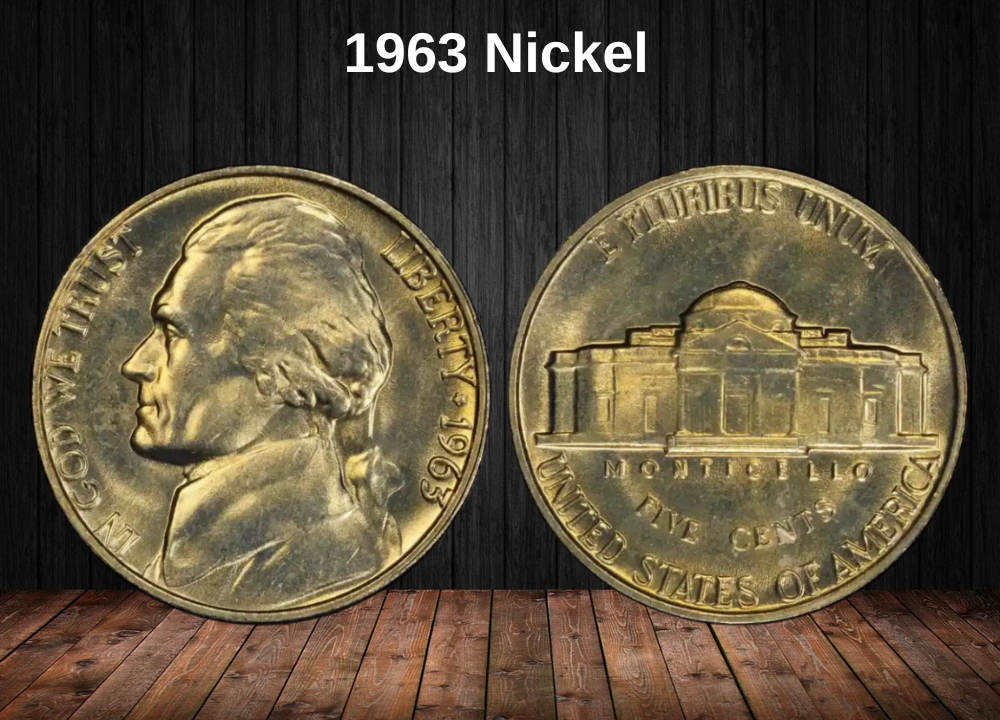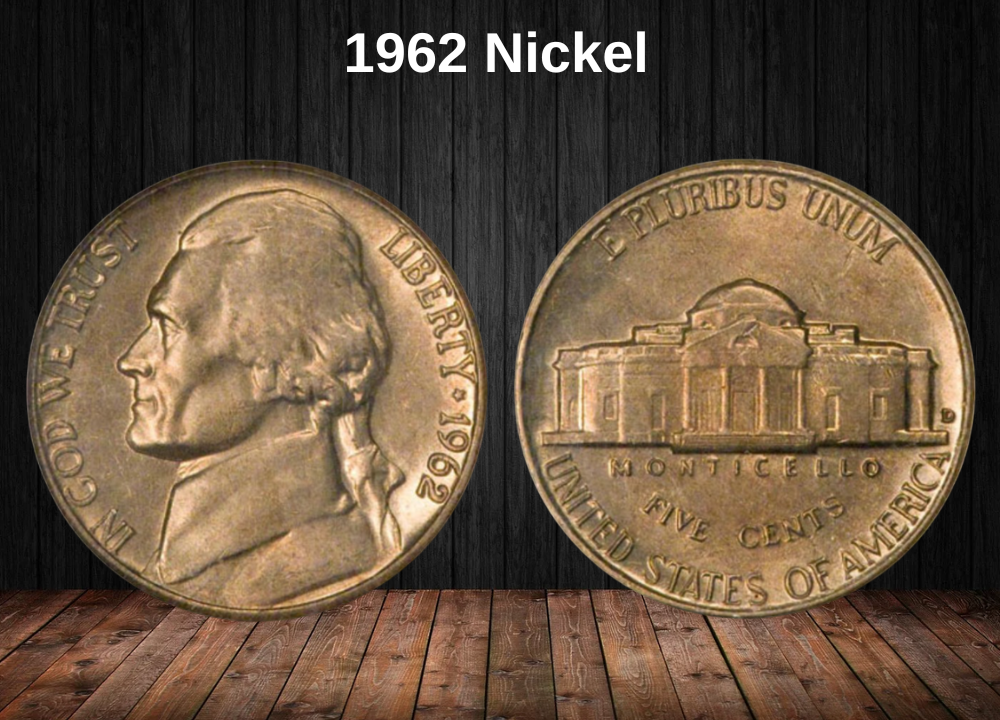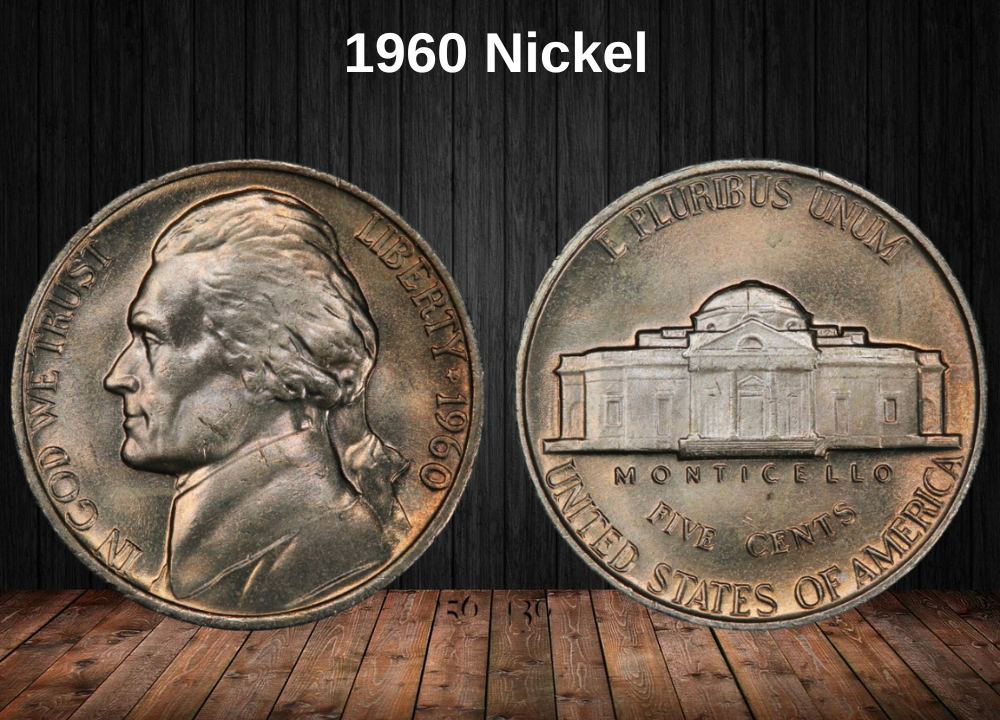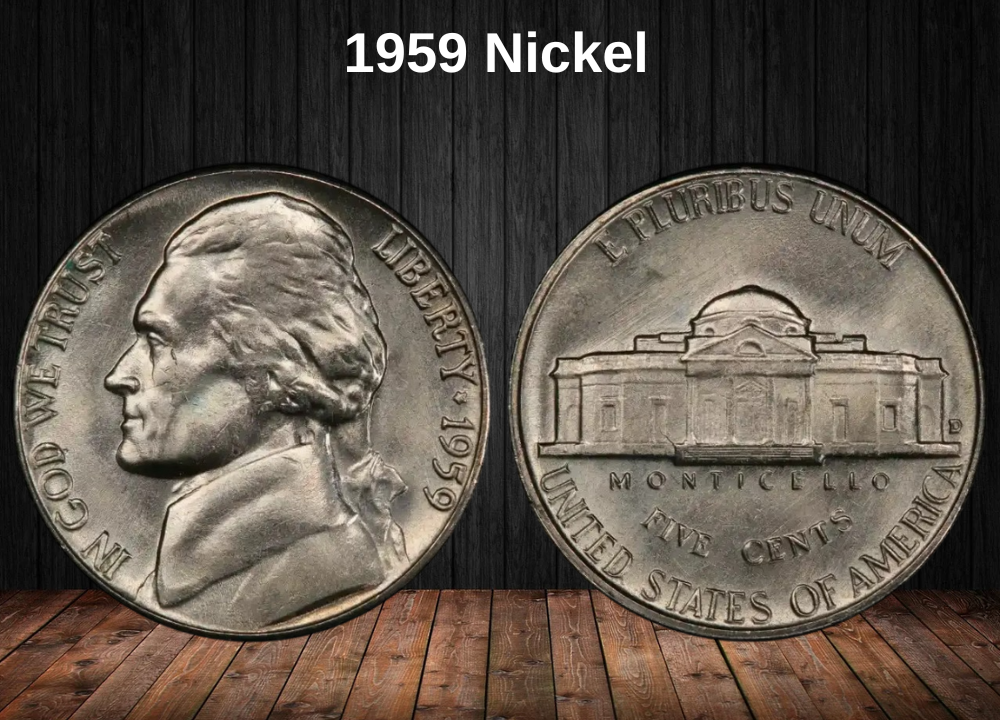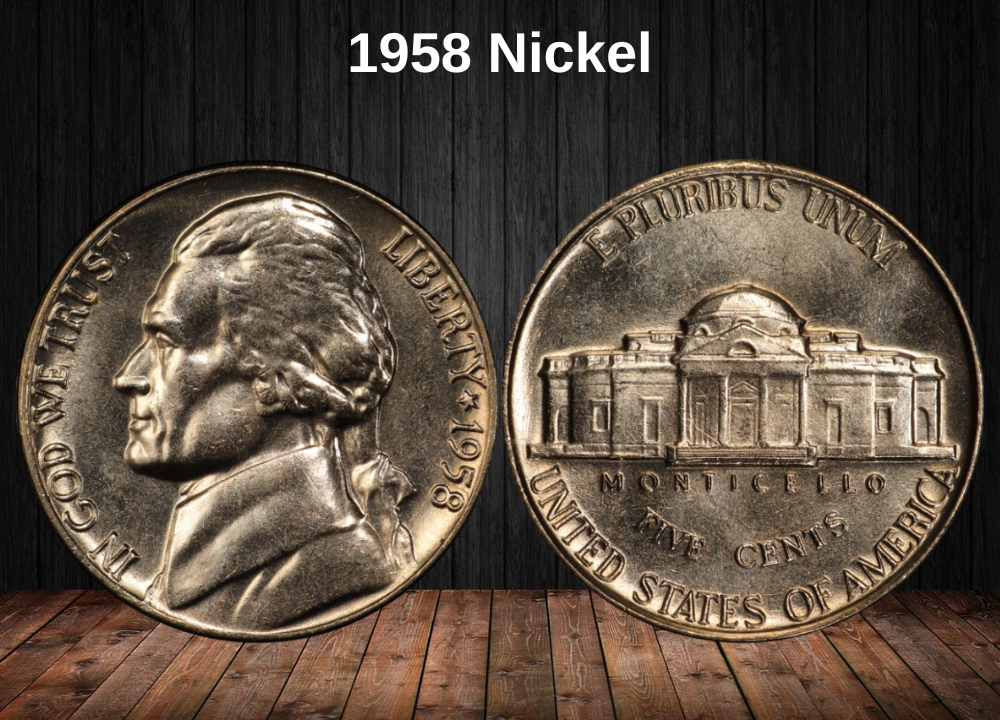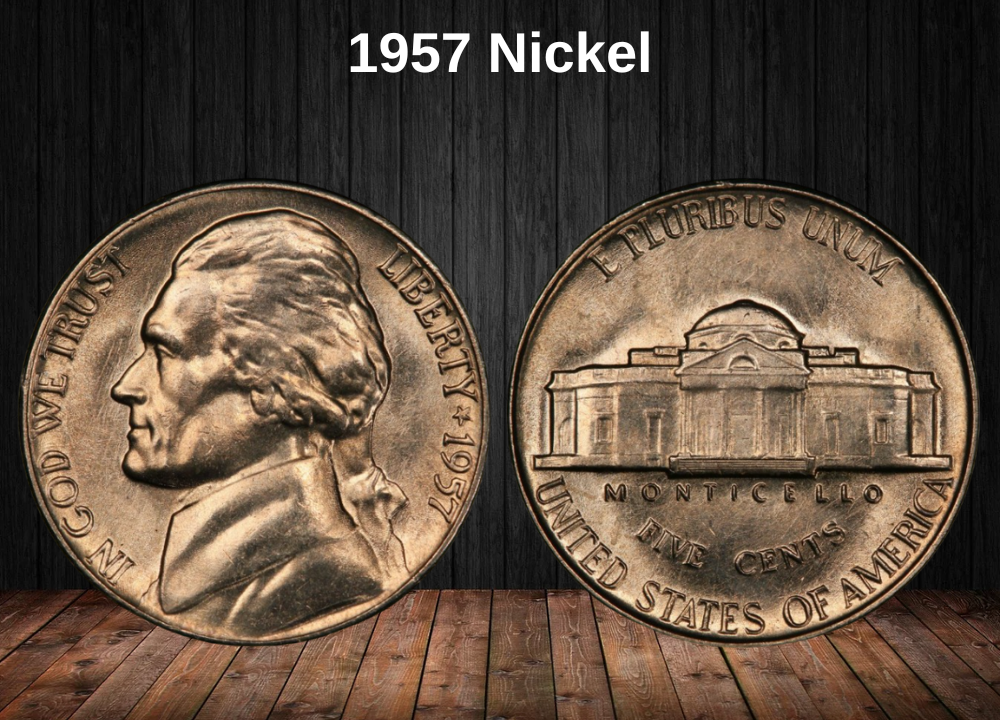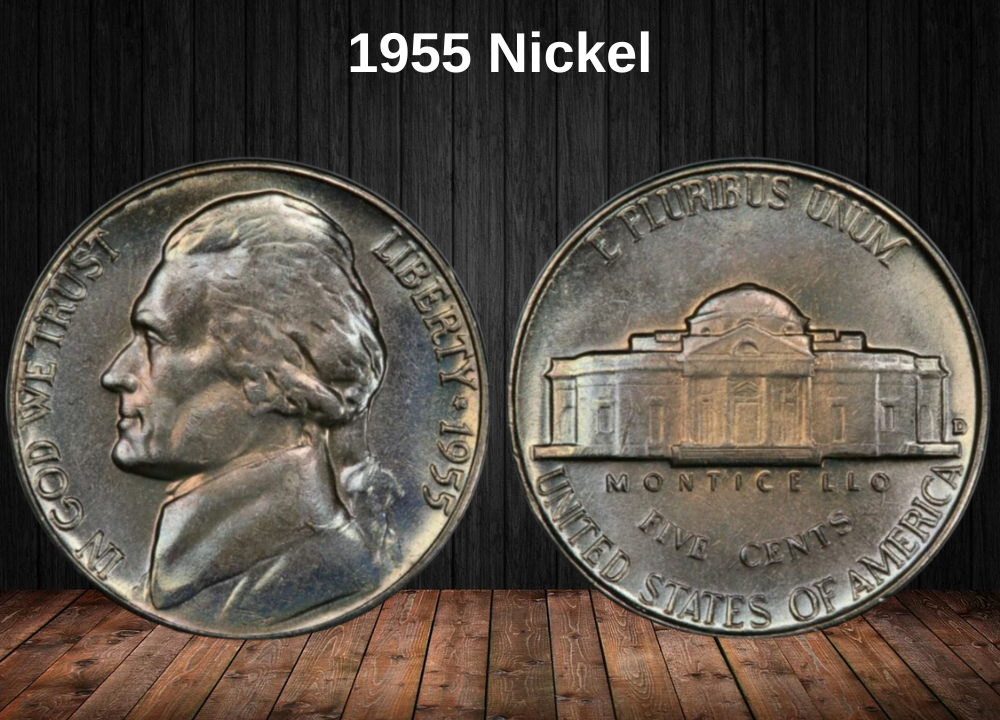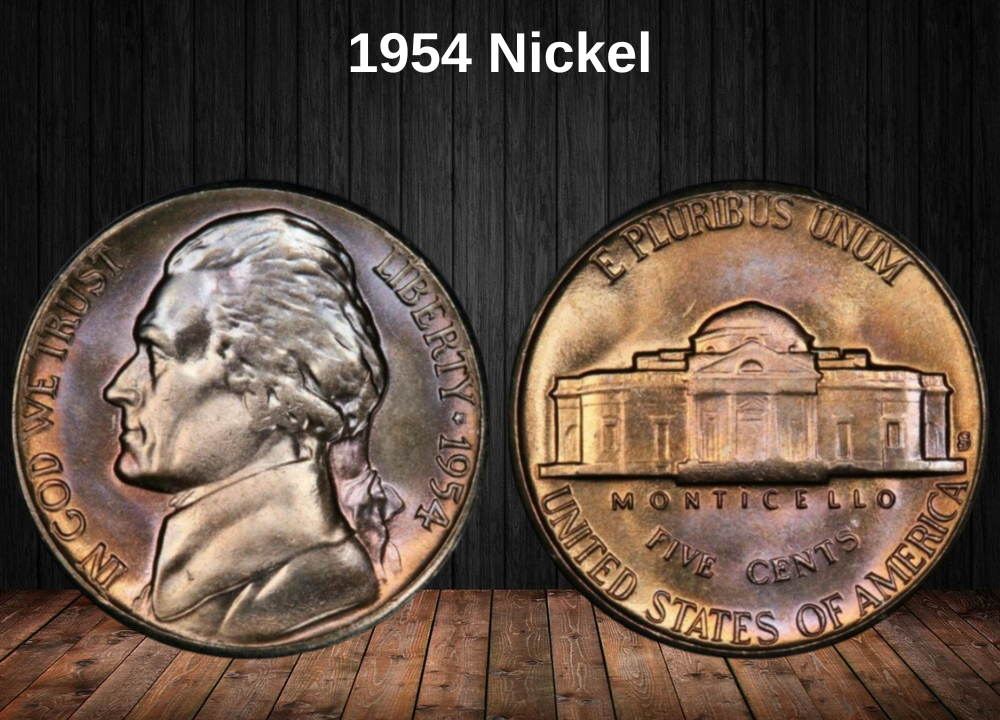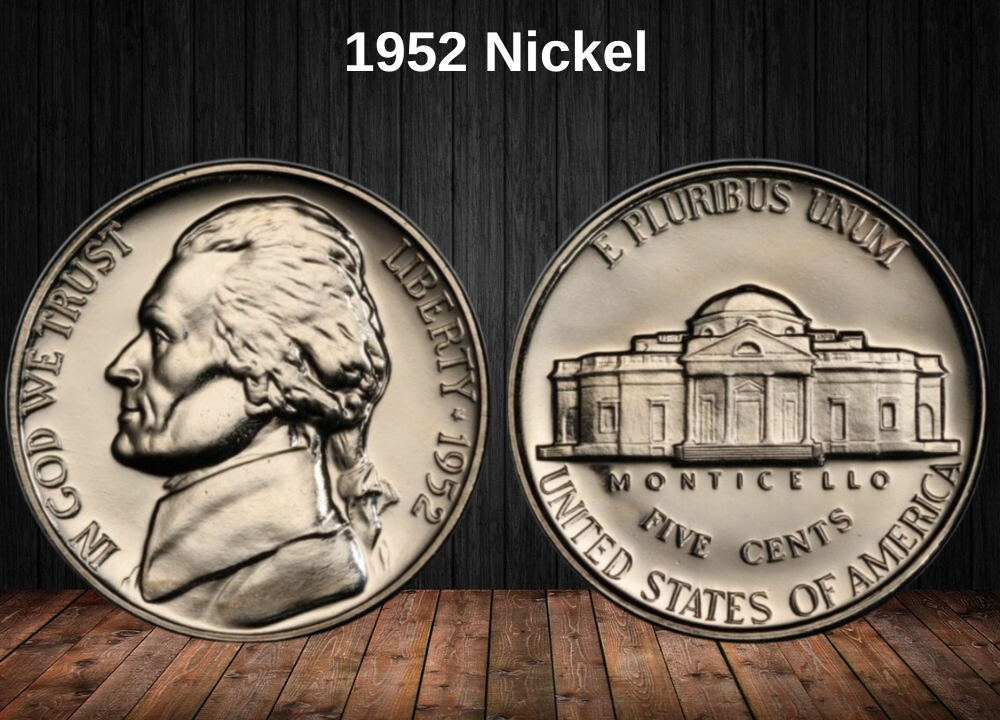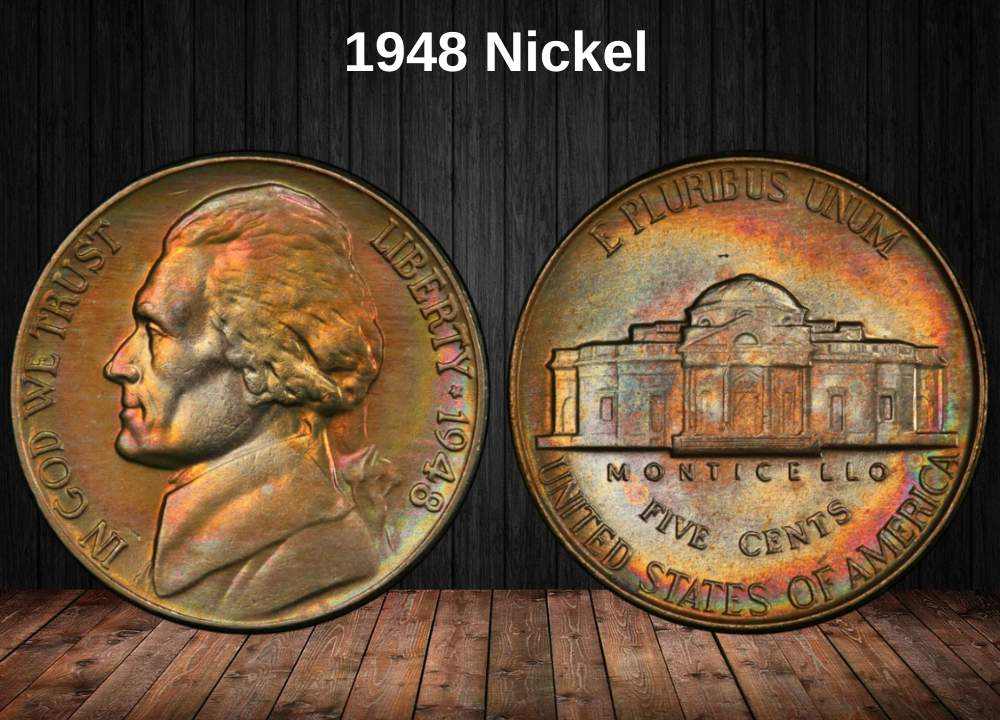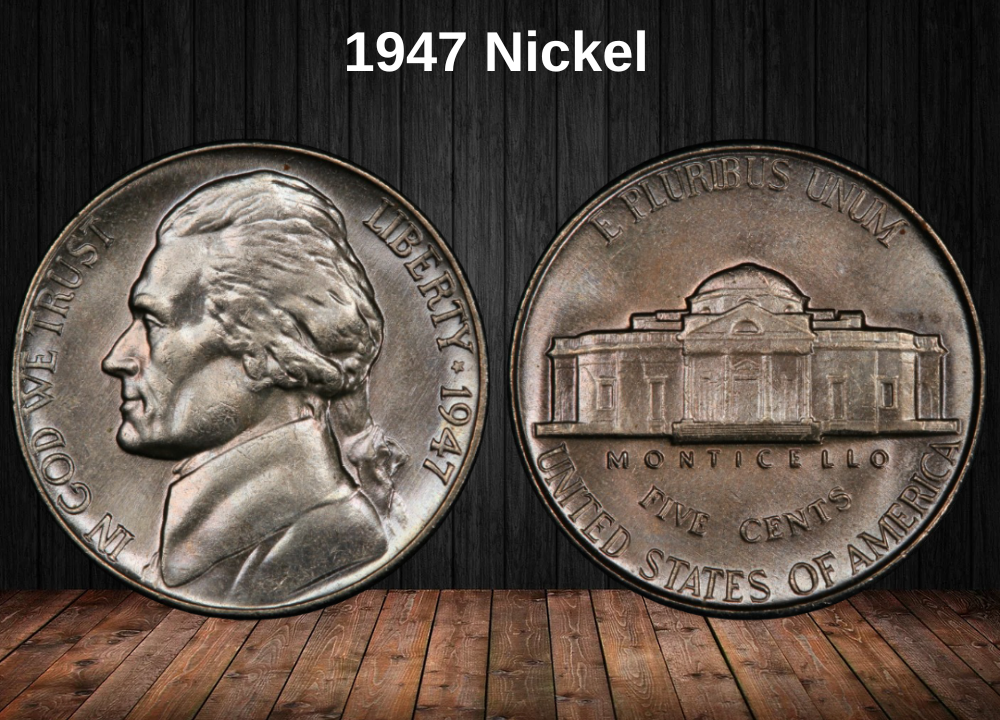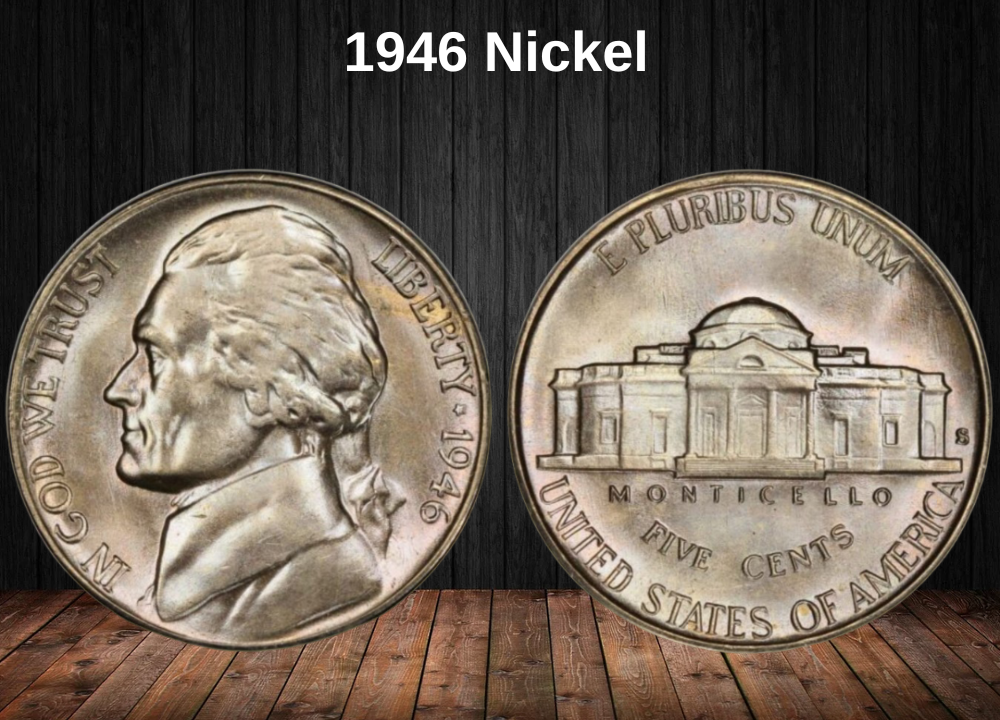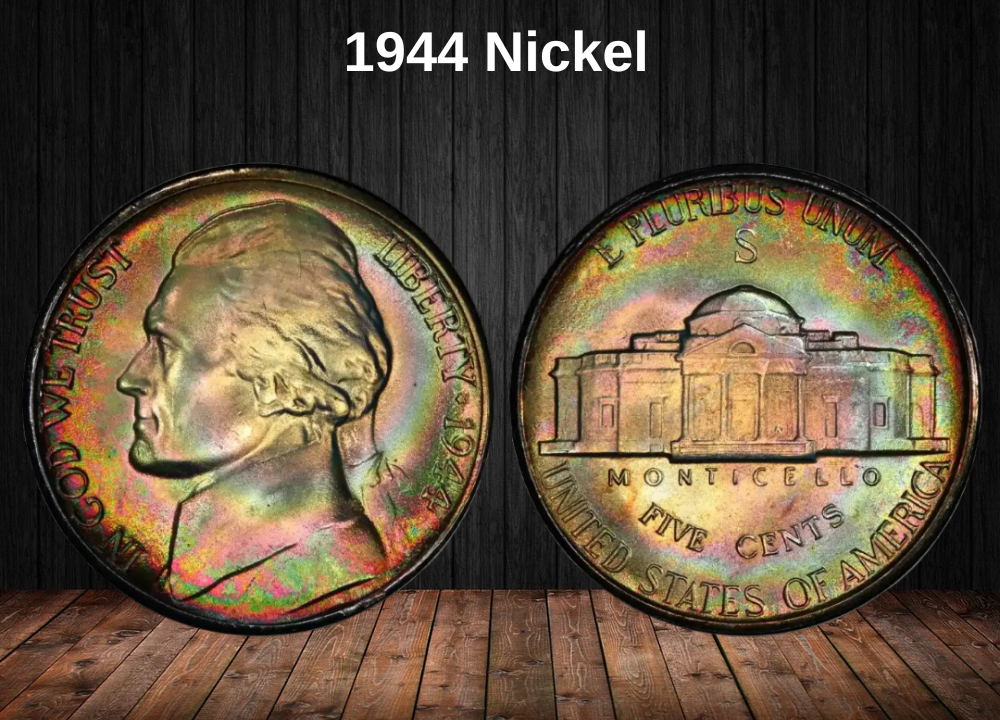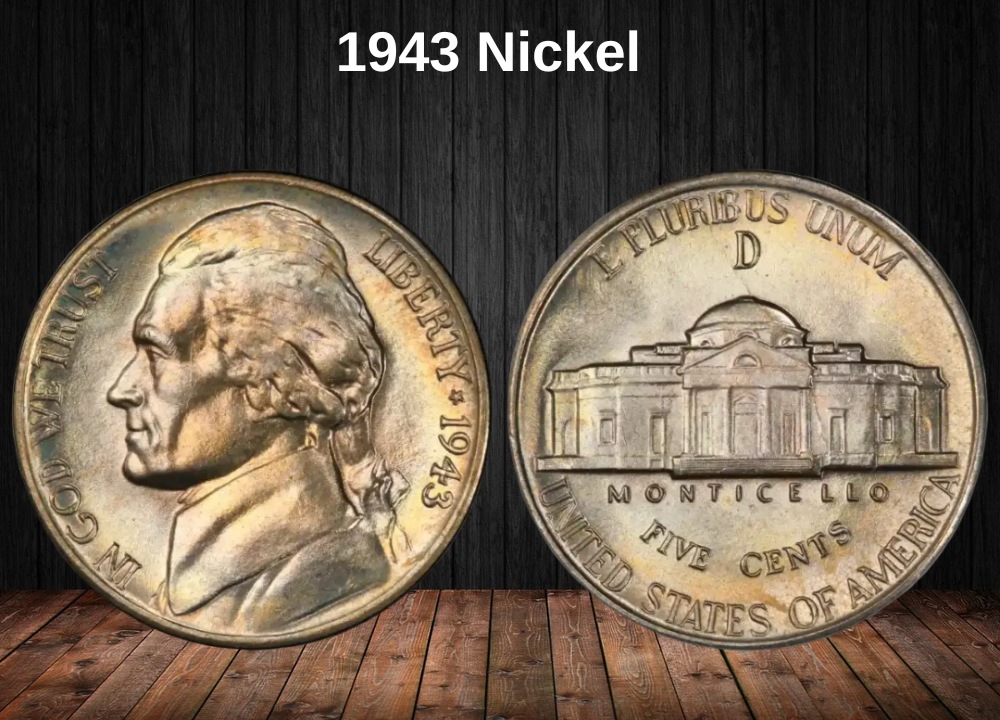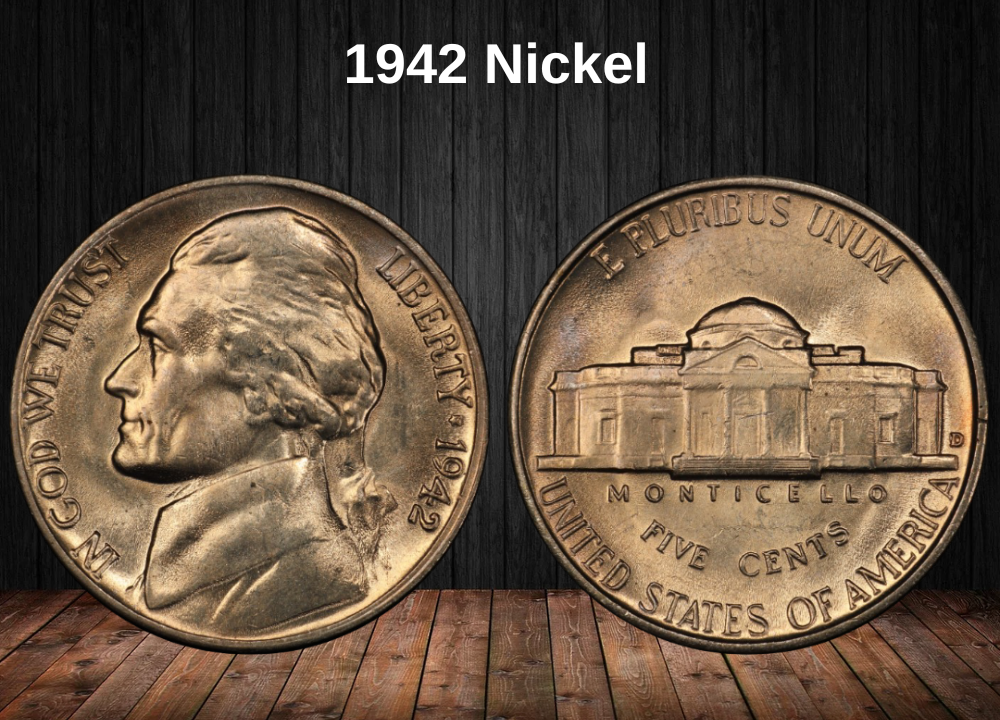The Buffalo nickel series, minted from 1913 to 1938, remains one of the most iconic American coin designs. Though most 1935 nickels entered circulation and contain no precious metals, certain well-preserved or error-struck specimens are highly valuable today.
Key Factors That Affect Value:
- Mint location (Philadelphia, Denver, San Francisco)
- Condition (grading from Good to Mint State)
- Errors, like the rare Doubled Die Reverse (DDR)
1935 Buffalo Nickel Value Chart
| Condition | 1935 (No Mint Mark) | 1935 (DDR) | 1935-D | 1935-S |
|---|---|---|---|---|
| Good (G) | $3 | $75 | $3 | $3 |
| Very Good (VG) | $4 | $90 | $4 | $4 |
| Fine (F) | $5 | $150 | $5 | $5 |
| Very Fine (VF) | $7 | $270 | $12 | $7 |
| Extra Fine (EF/XF) | $8 | $600 | $25 | $8 |
| About Uncirculated (AU) | $12 | $1,300 | $45 | $20 |
| Mint State (MS 60) | $32 | $6,250 | $85 | $60 |
| Mint State (MS 63) | $60 | $8,250 | $120 | $85 |
Note: DDR (Doubled Die Reverse) 1935 nickels are very scarce and command high premiums, even in lower grades.
History of the 1935 Buffalo/Indian Head Nickel

The 1935 Buffalo nickel is part of a beloved coin series that reflects a key shift in American numismatic design. Prior to the use of nickel, the U.S. produced silver half dismes between 1792 and 1873. However, as silver prices climbed, melting coins for their metal became more profitable than using them as currency. This economic pressure led to the introduction of cupronickel five-cent coins in 1866.
The Buffalo nickel—also called the Indian Head nickel—was the third design used for five-cent coins, following the Shield nickel (1866–1883) and the Liberty Head (V) nickel (1883–1913). It was also the final design before the release of the Jefferson nickel in 1938, which remains in circulation today.
The coin earned its two common names due to the imagery on both sides: a Native American portrait on the obverse and a plains bison on the reverse. Its creation was part of President Theodore Roosevelt’s initiative to improve the artistic quality of U.S. coinage. He believed American coins lacked creativity and cultural value, and by 1904, he had pushed for a complete redesign of circulating coins.
Sculptor James Earle Fraser was chosen to design the new nickel. His creation debuted on February 22, 1913, during a ceremony in Staten Island, New York, to mark the laying of the foundation for the National American Indian Memorial. As part of the event, forty Buffalo nickels were gifted to Native American chiefs—a symbolic gesture of respect. Sadly, the memorial was never completed beyond its foundation.
1935 Buffalo Nickel Mintages
| Location | Mint Mark | Coins Minted |
|---|---|---|
| Philadelphia | (No mint mark) | 58,264,000 |
| Denver | D | 12,092,000 |
| San Francisco | S | 10,300,000 |
| Total | 80,656,000 |
Despite its beauty, the design proved to be highly impractical for large-scale production. The dies used to strike these coins wore out unusually fast—sometimes within just one week. The intricate reliefs also caused problems in circulation, as the date and the words “FIVE CENTS” often faded quickly with use.
Even after modifications to improve durability, the minting challenges persisted. That’s why the U.S. Treasury eagerly awaited the end of the 25-year legal requirement to keep a coin design before making changes. In 1938, the Jefferson nickel officially replaced the Buffalo nickel.
Features of the 1935 Buffalo/Indian Head Nickel
The Obverse of the 1935 Buffalo Nickel
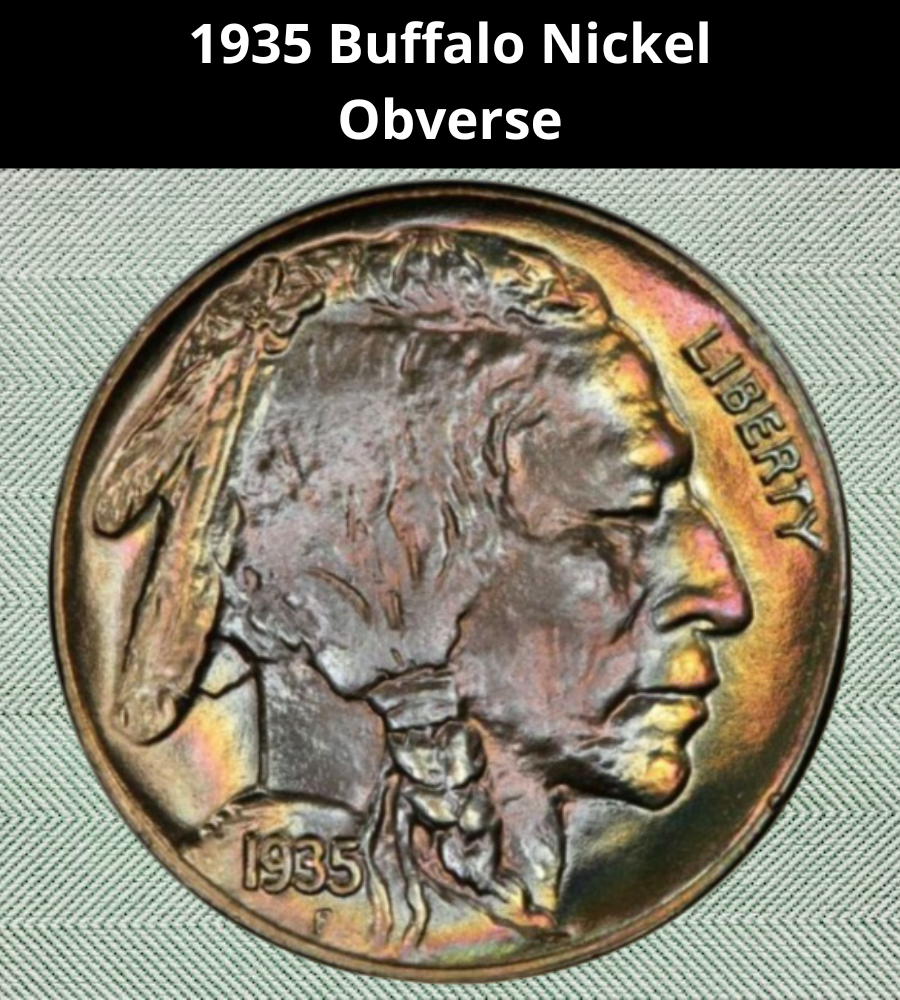
The front (obverse) of the 1935 Buffalo nickel, particularly those struck at the Philadelphia Mint, features no mint mark, as was standard practice for that facility at the time.
The design centers on a striking right-facing portrait of a Native American chief, a powerful symbol of the nation’s heritage. Just in front of the chief’s profile, along the right rim, is the word LIBERTY, cleanly inscribed.
You’ll find the minting date (1935) located near the bottom left portion of the coin, and directly beneath the date lies the small letter “F”, which represents the initial of sculptor James Earle Fraser, the artist behind the iconic design.
The Reverse of the 1935 Buffalo Nickel
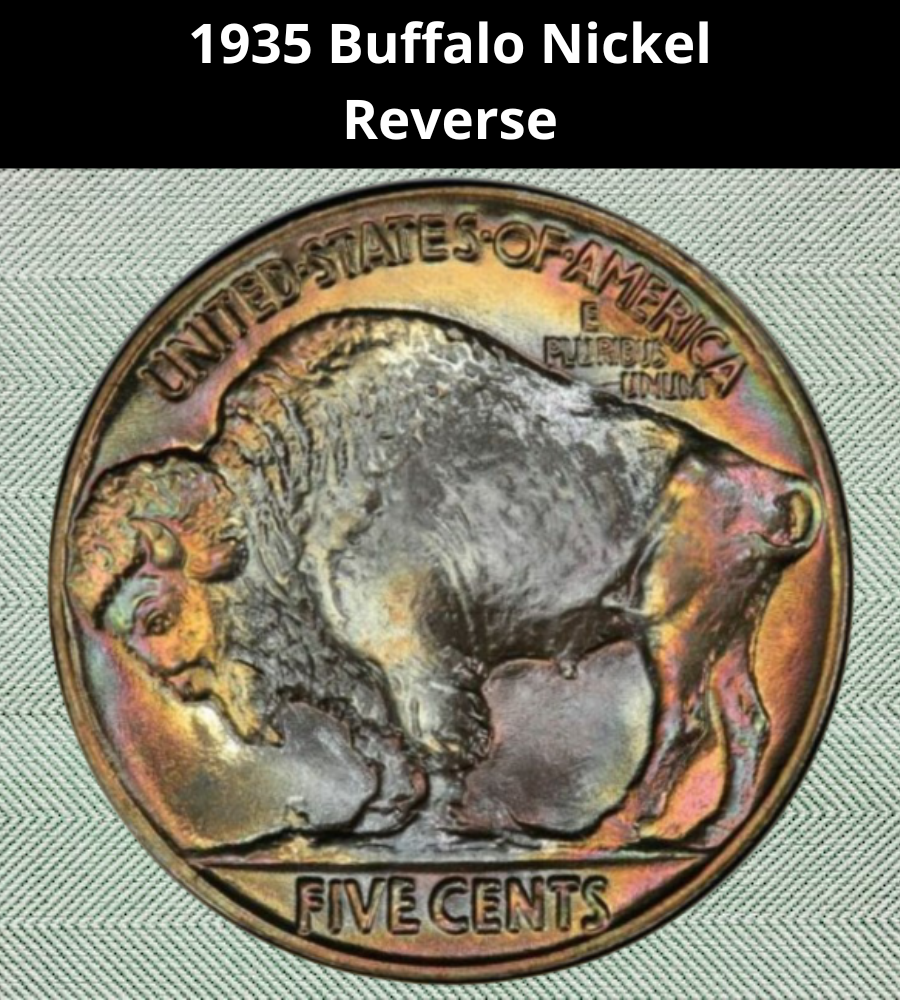
The reverse side of the 1935 Buffalo nickel showcases a powerful American bison standing proudly at the center of the coin. The animal is facing left and appears grounded on a flat, straight line representing the terrain.
Above the bison’s back, near the upper right edge, the motto E·PLURIBUS·UNUM is arranged in three compact lines. Arched along the top rim is the inscription UNITED STATES OF AMERICA, denoting the coin’s origin.
Below the ground line, you’ll find the denomination FIVE CENTS, clearly struck. If the coin was minted in Denver or San Francisco, the small “D” or “S” mint mark appears just beneath the denomination, nestled close to the rim.
Additional Characteristics of the 1935 Buffalo Nickel
The 1935 Buffalo nickel was struck from a durable alloy composed of 75% copper and 25% nickel, a standard mix used for American five-cent pieces of the era. Each coin has a diameter of 0.8350 inches (21.20 mm) and a thickness of 0.0768 inches (1.95 mm). Weighing exactly 5 grams (0.1764 ounces), it features a smooth, plain edge with no reeding or lettering—typical of this classic series.
How to Grade the 1935 Buffalo Nickel
The value of a 1935 Buffalo nickel is strongly tied to its physical condition, which reflects how much wear it has sustained while in circulation. Collectors generally consider G4 (Good) as the minimum acceptable grade for collectible quality. Coins in better shape, with more design details visible, receive higher grades.
Buffalo nickels that have minimal signs of use but were still circulated fall into the About Uncirculated (AU 50) category. Meanwhile, uncirculated coins—those that were never used in everyday transactions—are rated using the Mint State (MS) scale, ranging from MS 60 to a perfect MS 70, depending on strike quality, luster, and surface preservation.
Grading Scale Overview:
| Grade # | Classification |
|---|---|
| 1 | Basal State-1 |
| 2 | Fair |
| 3 | Very Fair |
| 4–6 | Good |
| 7–10 | Very Good |
| 12, 15 | Fine |
| 20, 30 | Very Fine |
| 40 | Extremely Fine |
| 50 | About Uncirculated |
| 60+ | Mint State (Uncirculated) |
Tip: Always refer to a reliable grading guide or consult a professional if you suspect your nickel is in high-grade condition. Accurate grading is key to determining its true market value.
1935 Buffalo Nickel Value Guides
1935 No Mint mark Buffalo nickel Value
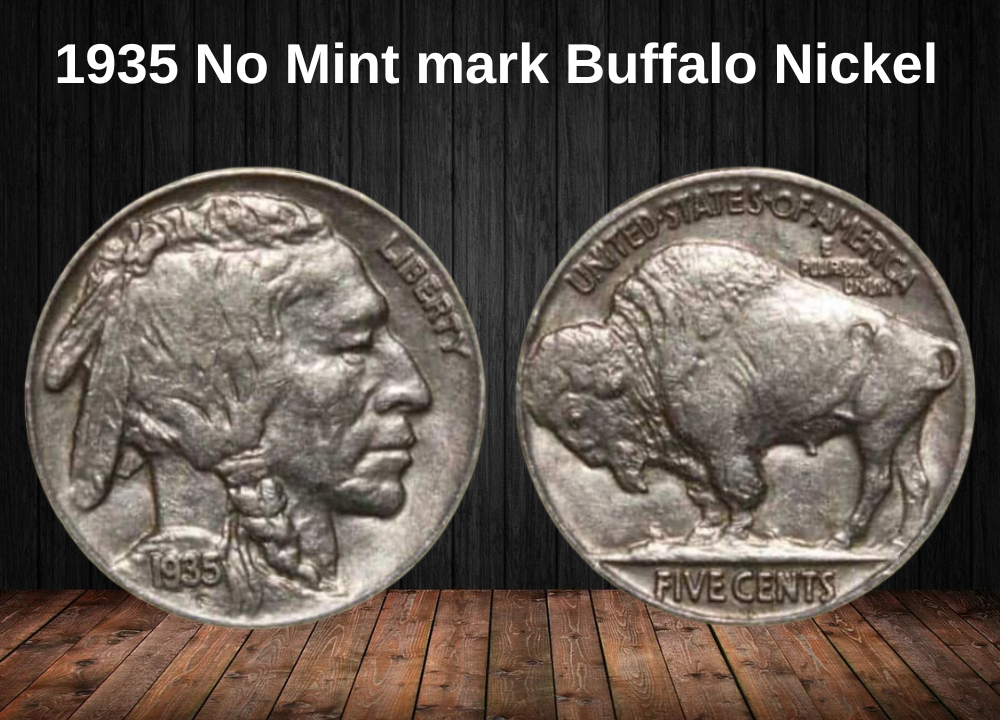
In 1935, the Philadelphia Mint produced a substantial number of Buffalo nickels—58,264,000 pieces to be exact. Because of this high mintage, most surviving coins are relatively easy to find and don’t demand high prices unless they’re in pristine condition.
Circulated examples typically range between $3 and $10, depending on how much detail remains visible.
Uncirculated (Mint State) coins command higher values, with price increasing alongside grade. Here’s a quick look at approximate market values based on Mint State condition:
| Grade | Estimated Value |
|---|---|
| MS 60 | $32 |
| MS 61 | $35 |
| MS 62 | $40 |
| MS 63 | $60 |
| MS 64 | $100 |
| MS 65 | $200 |
| MS 66 | $275 |
Nickels in MS 67 condition are considered rare and desirable, typically fetching around $950. However, the record-breaking price for a 1935 no mint mark Buffalo nickel stands at a remarkable $57,500, paid at auction for an exceptional MS 67+ specimen with near-perfect preservation.
1935 D Buffalo Nickel Value
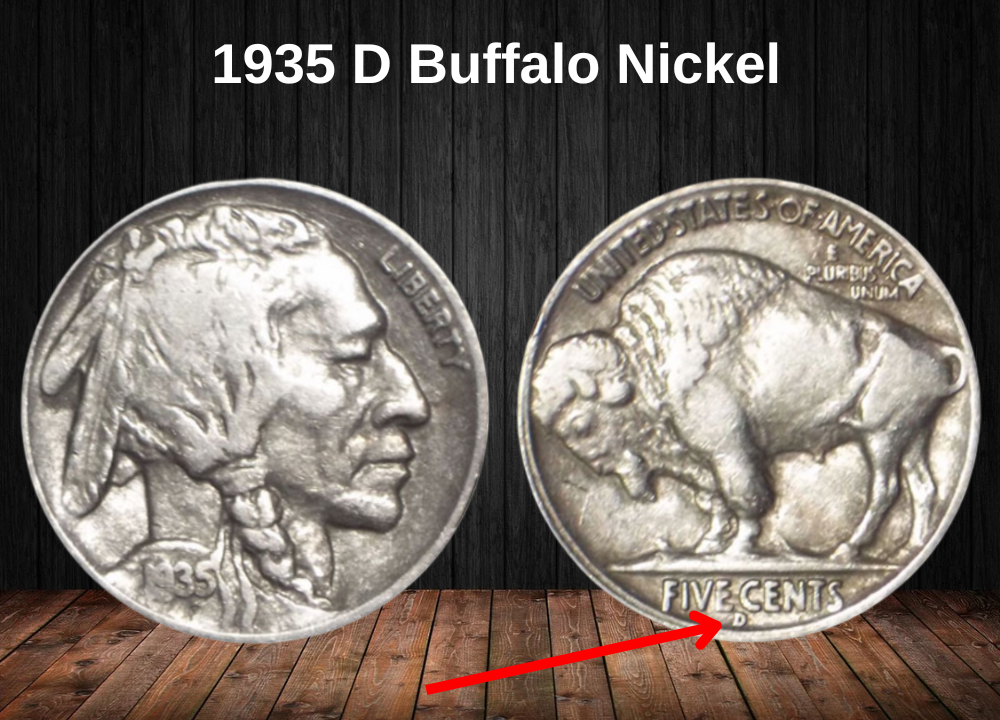
The Denver Mint struck a total of 12,092,000 Buffalo nickels in 1935. These coins carry the “D” mint mark just beneath the denomination on the reverse. Among the three mints that produced nickels that year, the Denver issue is the most sought-after by collectors, especially in higher grades.
In circulated condition, these coins remain relatively accessible, with values typically ranging between $3 and $45, depending on wear and detail.
For uncirculated (Mint State) examples, values rise significantly:
| Grade | Estimated Market Price |
|---|---|
| MS 60 | $85 |
| MS 61 | $90 |
| MS 62 | $100 |
| MS 63 | $120 |
| MS 64 | $140 |
| MS 65 | $325 |
| MS 66 | $1,200 |
Those graded MS 67 are quite rare and highly prized, often reaching up to $6,250 in value. In fact, a remarkable 1935-D Buffalo nickel graded MS 67+ set an auction record in March 2021, selling for an impressive $34,800.
1935 S Buffalo Nickel Value
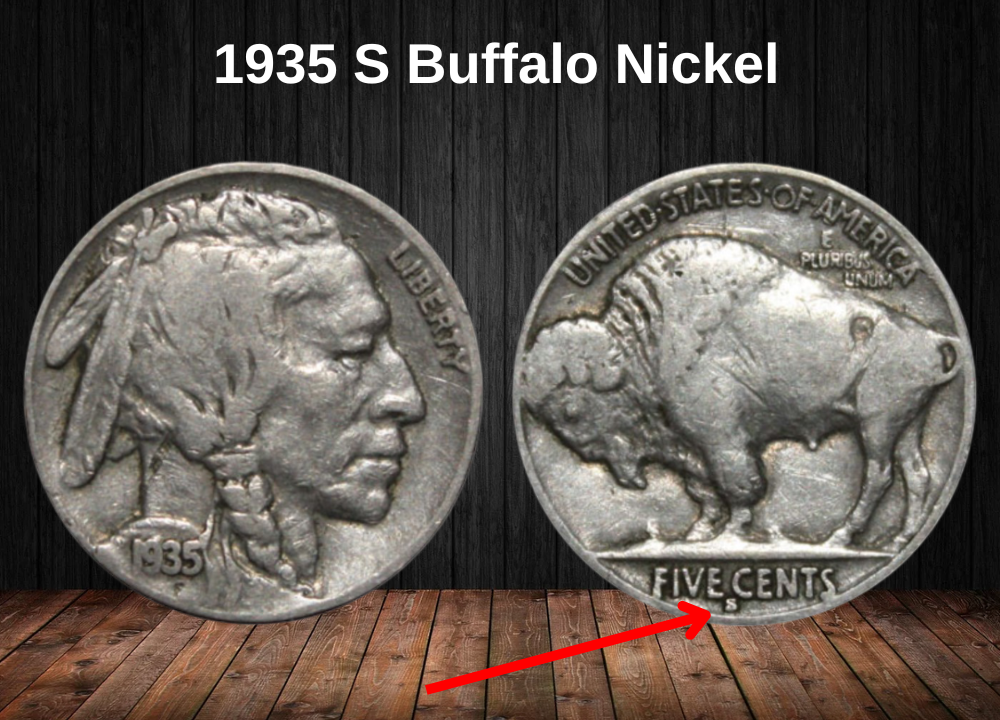
The San Francisco Mint produced 10,300,000 Buffalo nickels in 1935. Most of these coins were widely circulated, making worn examples fairly common and affordable. In lower grades, values range from approximately $3 to $20, depending on condition and legibility.
Uncirculated examples, however, are much more desirable and command higher prices on the market:
| Grade | Estimated Value |
|---|---|
| MS 60 | $60 |
| MS 61 | $65 |
| MS 62 | $70 |
| MS 63 | $85 |
| MS 64 | $150 |
| MS 65 | $230 |
| MS 66 | $500 |
Coins graded MS 67 are considerably rarer and typically sell for around $3,250, depending on eye appeal, luster, and strike quality.
The most valuable 1935-S Buffalo nickel ever sold was an MS 67+ graded specimen, which fetched an impressive $15,275 at auction in March 2019.
Rare 1935 Buffalo Nickel Error List
1935 Buffalo Nickel – Doubled Die Obverse (DDO)
One of the most desirable varieties from the 1935 Buffalo nickel series is the Doubled Die Obverse, found on coins struck at the Philadelphia Mint. This error is usually visible on the word LIBERTY, where the letters appear slightly doubled due to a misalignment during the die creation process.
Even circulated examples of this variety command a premium. Prices typically start around $40 and can reach as high as $3,000, depending on the amount of wear and clarity of the doubling.
When it comes to uncirculated (mint state) DDO nickels, the value rises significantly:
- MS 60 to MS 63 coins can range from $3,000 to $10,000
- Premium-grade examples like MS 65 and higher have sold for $20,000 to $24,000 at major auctions
1935 Buffalo Nickel – Doubled Die Reverse (DDR)
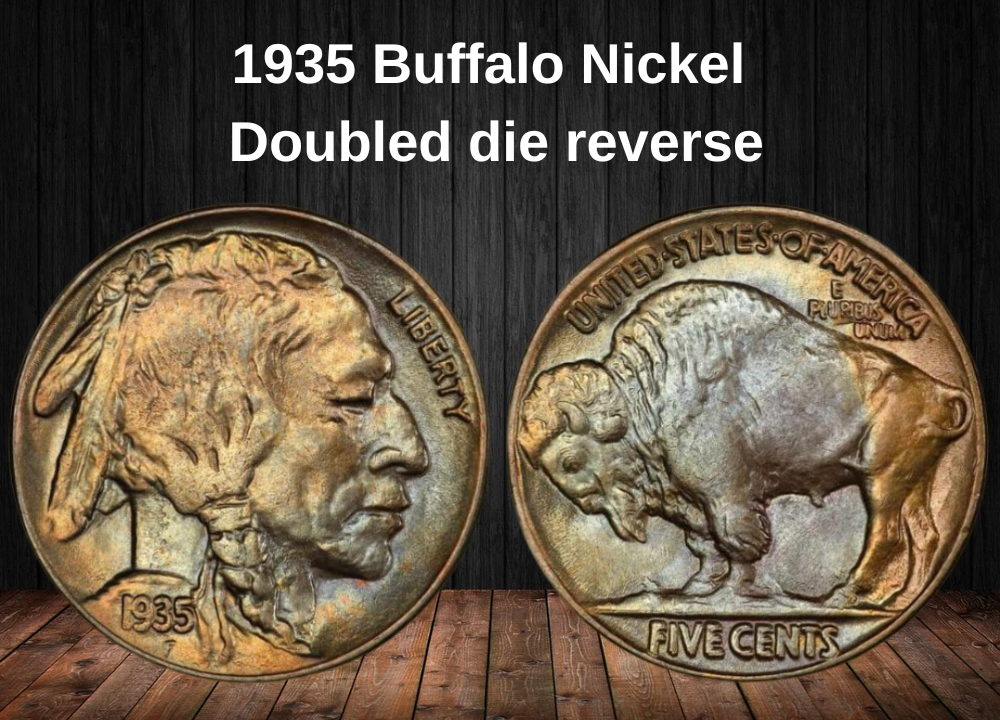
Another remarkable error from the 1935 Buffalo nickel series is the Doubled Die Reverse (DDR), caused when the reverse die shifts slightly during production. This misalignment leads to a noticeable duplication in parts of the reverse design.
Collectors often spot this variety by checking for doubling on the words “FIVE CENTS” or on the “LU” in E PLURIBUS UNUM. These small details are subtle but can dramatically increase a coin’s value.
Depending on condition and clarity, these coins typically sell for:
- $120 to $1,000 for average to well-preserved pieces
- Mint State examples (MS 63 or higher) can go much higher
One famous auction in August 2007 featured a stunning MS 65 DDR Buffalo nickel that sold for an incredible $104,650, making it one of the most valuable errors from this year.
1935 Buffalo Nickel – Re-punched Mint Mark (RPM)
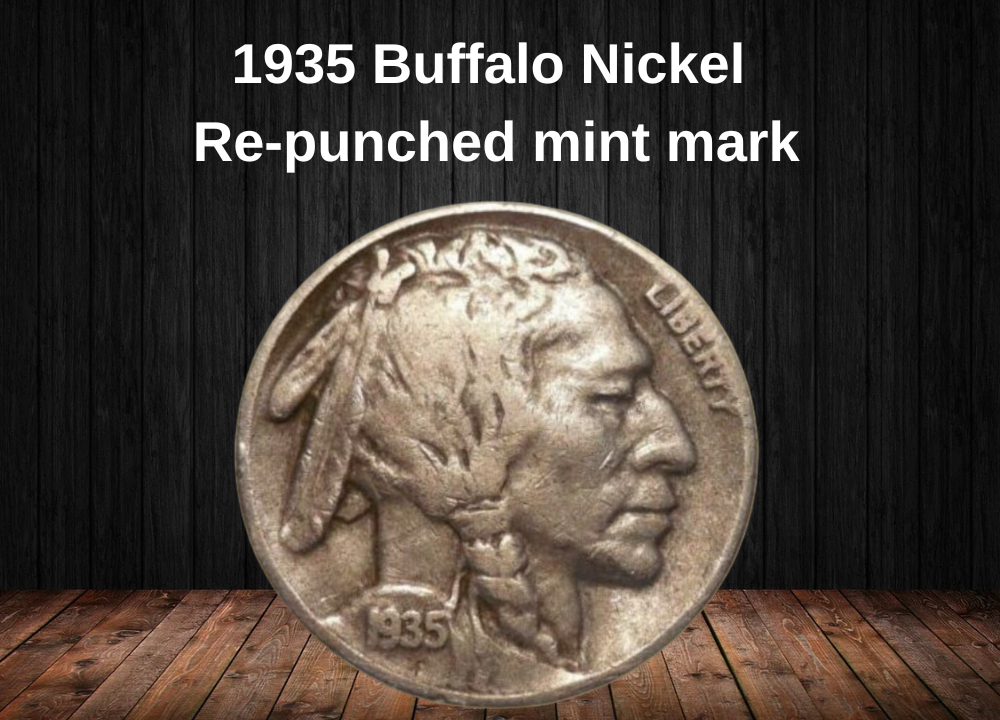
The 1935 Buffalo nickels from Denver (D) and San Francisco (S) occasionally feature re-punched mint marks, a common error on older coins due to the manual punching process used at the time. These re-punchings happen when the mintmark is struck more than once in a slightly different position.
S/S Re-punched Mint Mark (San Francisco)
Some nickels minted in San Francisco show a second “S” punched over the original one, slightly shifted. This produces a doubled “S” appearance, often visible with magnification.
- These S/S RPM coins are relatively common, which keeps values modest.
- Typical market value: $30 to $40, depending on clarity and wear.
D/D Re-punched Mint Mark (Denver)
Similarly, coins from the Denver Mint can display a D/D RPM error. In these cases, the second “D” may be partially overlapped or slightly misaligned with the first, often appearing slightly left or right of the original punch.
- These Denver RPMs are more desirable and tend to bring in higher prices.
- Typical value range: $80 to $550, depending on condition and the strength of the doubling.
- Notably, a high-grade 1935 D/D RPM Buffalo nickel sold for $999 at auction in June 2013.
Tip for collectors: Use a magnifier or loupe to carefully inspect the mint mark area. RPMs can add significant value—especially when certified by third-party graders.
Where to sell your nickel?
Now that you’re aware of your nickel’s value, you may be curious about the best places to sell it. Don’t worry: here’s a rundown of some top online marketplaces where you can conveniently sell your nickels, along with their benefits and drawbacks.
Explore the best platforms for selling nickels online (advantages and disadvantages).
FAQ about the 1935 Buffalo Nickel
1. What is the composition of the 1935 Buffalo Nickel?
The 1935 Buffalo Nickel is composed of 75% copper and 25% nickel, the standard alloy used for Buffalo Nickels from 1913 to 1938.
2. Who designed the 1935 Buffalo Nickel, and what does it depict?
The coin was designed by James Earle Fraser.
- Obverse: A composite portrait of a Native American chief
- Reverse: An American bison (buffalo), modeled after Black Diamond, a bison from the Central Park Zoo
3. Where were 1935 Buffalo Nickels minted?
- Philadelphia (no mint mark)
- Denver (“D” mint mark)
- San Francisco (“S” mint mark)
4. Are there any known varieties or mint errors for the 1935 Buffalo Nickel?
Yes. Notable errors and varieties include:
- 1935 Doubled Die Reverse (DDR) — especially valuable
- Repunched Mint Marks (RPMs) on some Denver and San Francisco issues
- Off-center strikes, die cracks, and clash marks
5. How rare is the 1935 Buffalo Nickel?
- Philadelphia coins are the most common
- Denver and San Francisco coins are scarcer in higher grades, especially with full detail
- Error varieties like the 1935 DDR are rare and valuable
6. What is the value of a 1935 Buffalo Nickel?
Prices vary by mint mark, condition, and presence of errors:
- Circulated examples: $2 to $30+
- Uncirculated Philadelphia coins: $40–$150
- Uncirculated Denver/San Francisco: $100–$500+
- 1935 DDR error: $500 to several thousand dollars depending on grade
7. What should collectors look for in a high-quality 1935 Buffalo Nickel?
- Strong details on the Native American’s braid and the buffalo’s horn
- Clear, original mint luster (no cleaning or polishing)
- Error varieties (DDR, RPM, etc.)
- Authentic mint marks and minimal surface wear

